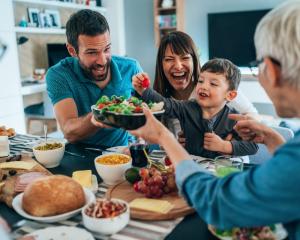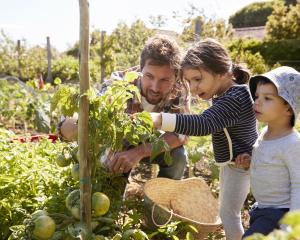
Talking about this month’s COP27 talks, Slow Food International president Edward Mukiibi said reducing carbon emissions by 45% in the next eight years - the minimum reduction necessary based on the science - could only happen by completely transforming the food system.
"It would require the dismantling of the current industrial model and it’s replacement everywhere with community-led production, based on local, seasonal foods and starting with a drastic reduction of the production and consumption of industrially farmed meat, which between 2018 and 2020 was responsible for 54% of the greenhouse gas emissions linked to food," he said.
The Slow Food movement was started in Italy by Carlo Petrini and a group of activists in the 1980s with the initial aim to defend regional traditions, good food, gastronomic pleasure and a slow pace of life.
Petrini outlines many different routes by which we can take back control of our food.
The three central principles of the Slow Food plan are these:
• food must be sustainably produced in ways that are sensitive to the environment.
• those who produce the food must be fairly treated.
• and the food must be healthy and delicious.
In his travels around the world as ambassador for Slow Food, Petrini has witnessed first hand the many ways native peoples are feeding themselves without making use of the harmful methods of the industrial complex.
The Slow Food Manifesto says, "Slow Food envisions a world in which all people can access and enjoy food that is good for them, good for those who grow it and good for the planet ... Slow Food recognises the strong connections between plate, planet, people, politics and culture".
Cafes and restaurants wanting to embrace the sustainable practices of the Slow Food movement, can achieve "Snail of Approval" accreditation (the logo for the movement is a snail). This helps raise consumers’ awareness to take more care when choosing their food.
In Dunedin we have an active group called Slow Food Youth Otago.
"The Slow Food Youth Otago group was born out of the International Day of Awareness of Food Loss and Waste last year," representative Gabby Arnott says.
"It has created an opportunity for students who have a connection with kai to share kōrero (and food!) in an educational and nourishing space."
Slow Food extends from looking after the land, to how food gets to our plate, to the way we consume it, and lastly, the way we dispose of it, she says.
Events the group has been involved in include a pollination workshop, potlucks, a soup day using food donated via Kiwi Harvest, composting initiatives, and volunteering at the Pātaka Ora free kai service at Araiteuru marae.
It’s very positive and encouraging to know our young people are so proactive in making changes that are desperately needed.
Slow Food is a guide to us all, it gives inspiration for community and local networking; it empowers us to stand up for our right to good food, and for our right to food sovereignty and securing our food systems ourselves.
We can take steps towards change, for example:
• making stock/vegetable broth from the ends and peels of vegetables to minimise waste.
• being more conservative with our consuming choices in the store - buy only local and seasonal.
• learn what our native/ local crops are and grow them in our gardens, source seeds from a local seed bank.
• learn what grains grow locally and where to source them
Join Slow Food and start a "slow food community". Look out for food businesses with the "Snail of Approval" certificate.
Plant-based cooking classes
Dunedin, The Valley Project community rooms, North Rd:
November 29, December dates TBA.
Wellington, St Peter’s Church Garden Room
January 22, 2023
More details on my website hagarozri.co.nz
Some links
Local seed bank https://www.urbanorganics.org.nz/
Local grains:
NZ bio grains https://www.biograins.co.nz/
Millmore Downs grains https://www.milmoredowns.co.nz/shop/buy
Midlands seeds and foods https://www.midlandsnz.com/

Tofu scramble
This is a great way to have tofu, it makes a very quick and easy breakfast. I used tofu made on premises at Asian Groceries on Prince Albert Rd, St Kilda.
Serves 4
1 block soft tofu (not silken)
1 onion, chopped
2 cloves garlic, chopped
1cm fresh ginger, chopped or grated
1 fresh chilli, chopped (optional)
Fresh herbs - spring onion, fresh coriander, parsley - chopped
Vegetables of your choice - carrot & capsicum cut into strips, zucchini, mushrooms - sliced
Olive oil (about 2 Tbsp)
Tamari (good quality soy sauce)
Method
Prepare all the ingredients by chopping the vegetables and fresh herbs, draining the tofu and wrapping it in a tea towel.
Place a frying pan on the stove on low flame, when hot add the oil, add the onion and fry a little. Now add the vegetables, stir for a minute then add the tofu by crumbling it into the pan. Cook by stirring often for 5 to 10 min. Add the fresh herbs (except the spring onion) and the tamari, by drizzling onto the pan - taste and add more if needed. Serve on toast or as desired. Garnish with spring onion.
This recipe is inspired by a great food writer, Lorna J. Sass, from her cookbook Recipes from an Ecological Kitchen, which is the most cherished cookbook in my collection. I bought it in 1997 and still love reading it.
An award-winning food writer and Slow Food advocate, Lorna has inspired me since the beginning of my culinary journey.
During the ’90s, she wrote numerous vegan cookbooks, recognising that a vegan approach to food created a much smaller carbon footprint. This was years before most cookbook authors were writing about the connection between food and sustainability. Her Recipes from an Ecological Kitchen was published in 1992!

Vegan lemon and poppy seed cake
Lorna J. Sass’s latest cookbook, Whole Grains For Busy People, focuses on quick-cooking recipes for cooks on the go. Her current passion is to make healthy food available to all, and she is especially eager to help people grow their own food on rooftops and in community gardens in New York. This is my version of her lemon poppyseed cake.
About ½ tsp oil and 2 tsp flour to prepare a 9 inch tube pan
5 Tbsp flax seeds
1 cup water
3 cup unbleached white flour, sieved
½ cup poppy seeds
2 tsp baking powder
1 tsp baking soda
2 Tbsp finely minced or grated lemon peel (coloured part only, organic if possible)
½ tsp sea salt
½ cup safflower oil
¾ cup maple syrup / apple syrup / raw sugar
½ cup freshly squeezed lemon juice
For the glaze (optional)
2 Tbsp maple syrup
3 Tbsp freshly squeezed lemon juice
Method
Turn oven on to 180degC.
Brush the oil onto the bottom sides and centre of a 9 inch (23cm) tube pan. Dust lightly with flour, tip out the extra, and set aside.
In a blender, grind the flax seeds. Add the water and process until you achieve a slightly gummy mixture, about 30 seconds. Set aside. (This process does not work so well in a food processor, but it can be done. First grind the flax seeds in a spice or coffee grinder. Combine with water in the bowl of the processor and spin until slightly thickened, about 60 to 90 seconds.) A third alternative is to whisk the mixture vigorously by hand about 100 times. Tip the mixture out into a measuring cup and set aside.
In a large bowl, combine the flour, poppy seeds, baking powder, lemon peel, and salt.
In a blender or processor, blend the oil and maple syrup/sweetener for about 15 seconds. Add the lemon juice and then the flax seed mixture, processing for about 10 seconds between additions. Mix the baking soda in a little water and add.
Stir the liquid ingredients into the dry, mixing just until all the flour is absorbed. Transfer the batter to the prepared tin and gently smooth with a spatula.
Bake on the centre shelf of an oven preheated to 180degC until the top bounces back to a gentle touch and a skewer inserted into the centre comes out clean - about 35 to 40 minutes. Then run a knife along the outside and centre edges and unmould. Set the cake on a rack to cool completely.
If using the glaze, combine the maple syrup and lemon juice. Poke holes into the top of the cake with a toothpick, and brush the glaze onto the top of the cake. Brush the sides with any remaining glaze.
Seasons - By Alison Lambert - Available for purchase now!

The Otago Daily Times and Alison have collaborated to bring you her first cookbook – Seasons.
This book is the ultimate year-round cookbook. Seasons is filled with versatile recipes designed to inspire creativity in the kitchen, offering plenty of ideas for delicious accompaniments and standout dishes that highlight the best of what each season has to offer.
$49.99 each. Purchase here.
$44.99 for ODT subscribers. Get your discount code here.












